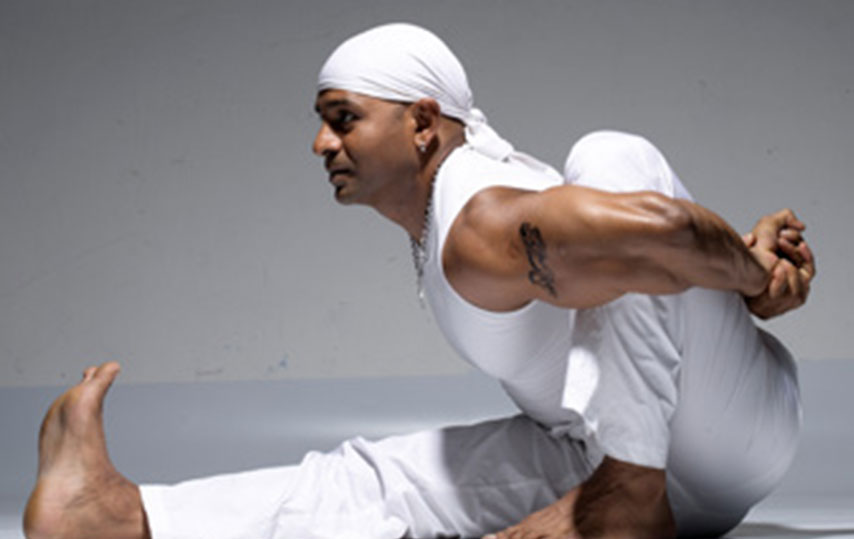The most important benefit of yoga is physical and mental therapy. According to medical scientists, yoga therapy is successful because of the balance created in the east jump nervous and endocrine system. Through the practice of yoga, we become aware of the interconnectedness between our emotional, mental and physical levels.
This month, we continue to explore a few poses and the therapeutic benefits.
 Controlling Blood Sugar Levels, Supple Joints and Trim Waist Marichiyasana (Name of the Sage)
Controlling Blood Sugar Levels, Supple Joints and Trim Waist Marichiyasana (Name of the Sage)
1. Sit upright with both legs stretched in front.
2. Bend the left knee and place the heel close to the left buttock. Keep the right leg straight and right foot flexed.
3. Place the right hand on the floor next to the right leg.
4. Inhale, raise the left arm up towards the ceiling.
5. Exhale, bend forward and reach the left arm towards the toes and bend the elbow close to the shinbone. Grasp hold of the right hand from behind the back.
6. Inhale, lengthen the spine.
7. Exhale, bend forward while keeping the spine straight.
8. Stay in this position for five long and deep breaths.
9. To release, inhale and return to the starting position.
10. Repeat with the other side. This is one set.
Practise 2 – 3 sets.
Benefits: This posture is great for increasing the flexibility of your hip, shoulder and wrist joints. At the same time, it stretches your hamstrings and massages your internal organs.
 Vakrasana (Spinal Twist)
Vakrasana (Spinal Twist)
1. Sit upright with the legs stretched out in front.
2. Bend the left knee over the right leg and place the left foot on the right side of the right leg.
3. Inhale, raise the right arm up.
4. Exhale, bring the right arm in front of the left knee and hold onto the back of the right knee.
5. Bend the left arm and place it behind the back.
6. Stay in this position with the spine upright for about five long and deep breaths.
7. Repeat other side. This is one set.
Practise 2 – 3 sets.
Benefits: This posture helps to keep your spine supple and gonfiabili massages and tones your internal organs. At the same time, it also helps to keep your blood sugar at a healthy level.
 Relieving Hips, Knee, Ankle Pain and Stiffness Janu Naman (Knee Hugging)
Relieving Hips, Knee, Ankle Pain and Stiffness Janu Naman (Knee Hugging)
1. Sit upright with both legs stretched in front.
2. Inhale, bend the left knee and hug the knees close to the left armpit.
3. Exhale, release and straighten the left leg to the floor.
4. Repeat with the other leg. This is one set.
Practise 10 sets.
Benefits: This exercise helps to stimulate and strengthen the ligaments around the knee and ankle joints and aids in relieving knee and ankle pain.

Upavista Janu Naman (Lift Leg Stretch Pose)
1. Sit upright with both legs stretched in front.
2. Bend the right knee and place the heel close to your perineum.
3. Bend the left knee and hold onto the opposite wrists from behind the knee.
4. Inhale, lean back slightly and straighten the left leg while pointing the toes towards the ceiling. Keep the spine upright while gazing at the toes.
5. Exhale, bend the knee and lower the foot to the floor.
6. Practise 5 times on the same leg.
7. Repeat with the other leg.
Benefits: This exercise helps to keep your hip joints flexible while stimulating and strengthening the ligaments around the knee and ankle joints.


















 Other
Other